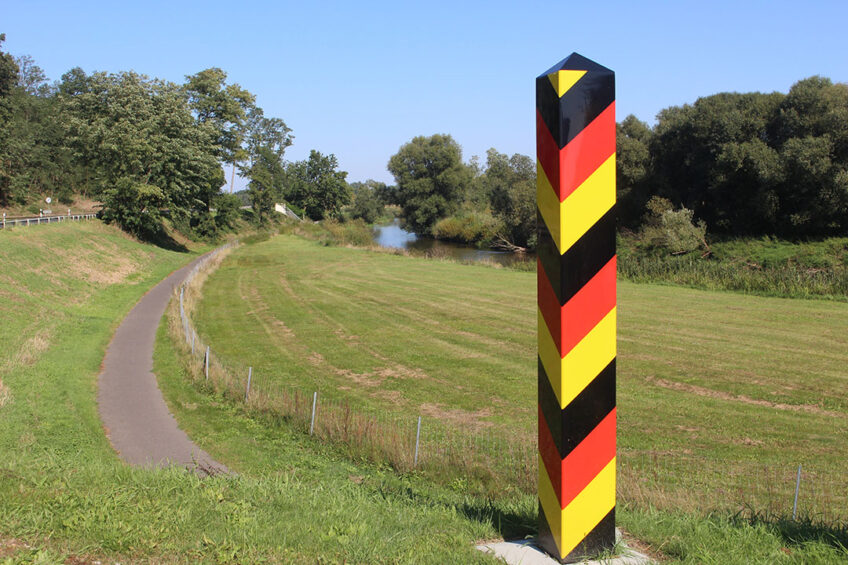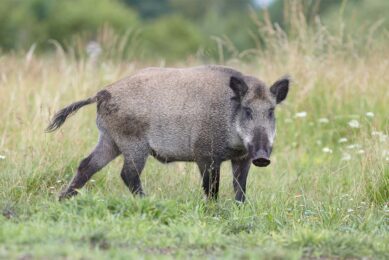ASF Germany: Virus will be around for 5 more years

The African Swine Fever (ASF) virus is likely to be around in Germany for at least another 5 years.
That rough estimate was given by veterinary experts at a press conference by Brandenburg state in the context of 1 year of African Swine Fever in Germany. Obviously, they added, it is difficult to make clear assumptions as there are quite a number of unknown factors.
Ongoing infection pressure from Western Poland
On behalf of the German Federal Research Institute for Animal Health, FLI, Dr Carola Sauter-Louis explained that the situation in Eastern Germany is substantially different from that in Belgium or the Czech Republic, so far the only countries that have managed to successfully eradicate ASF infections in wild boar. That is because they only had to fight 1 spot of infection. The situation in Germany, however, is different, because the country is currently exposed to ongoing infection pressure from Western Poland along the entire border. In Poland the ASF situation is not under control.

ASF situation in Estonia
The 5 year expectation is based on the ASF situation in Estonia, Dr Sauter-Louis said, where after 5 years of fighting and also because of natural causes, bit by bit the ASF infections disappeared. If a similar pattern were to be observed in Western Poland, it would mean that roughly in 5 years’ time the worst would be over.
That does not mean, however, that Germany will sit and wait until then. Brandenburg state veterinarian Dr Stephan Nickisch explained that the states bordering Poland are currently working to build a second permanent fence a few kilometres into the country, complementing an already permanent fence running immediately parallel to the country’s border rivers Oder and Neisse. In Brandenburg, 184 km of this second fence is yet to be built. Dr Nickisch said that – if nothing else happens – this second fence will be completed roughly by November 2021. The protection corridor that will be coming into existence has to serve as a “bulwark,” protecting the rest of Germany against ASF, in which hunting as well as carcass surveillance will be intensive. In Brandenburg state, this strip will include 815 km2, with 51 pig farms with almost 14,000 pigs. Those will be monitored intensively, they said.

Control will be better after ASF bulwark
Once that the second fence is completed, pretty much the situation behind this bulwark would have to resemble the situation in Belgium and the Czech Republic a lot better, Dr Sauter-Louis explained, as it would mean in theory, no fresh infected wild boar would occur. Seeing that the situation within the Czech Republic as well as Belgium took roughly a year to calm down, it would be fair to assume that after November 2021, the situation behind the protection corridor will be under control within a reasonable timeframe.
At the moment within Brandenburg state, 7 core areas have been identified, and an 8th is located in the neighbouring state of Saxony. In some core areas the situation is still worrisome, but in various of earlier core areas, like for instance in Spree-Neisse/Oder-Spree, as well as in Märkisch-Oderland, in August 2021 very few ASF outbreaks were reported. The picture appears to be that all wild boar there simply died either of ASF or were shot.
Zooming out, all in all this means that in the months and year after the completion of the protection, in theory, from time to time occasionally infected wild boar may be found in the protection zone, until the infection pressure from Western Poland simply evaporates.
At the press conference, Ursula Nonnemacher, Brandenburg state minister for consumer protection, was also present. She called it a triumph that the virus did not travel more westward, but it had remained relatively close to the border.

Keeping pig producers going financially
For pig producers in the affected areas in Brandenburg not a lot has been arranged at the moment to keep them going financially. Even though only 3 (smaller) farms got infected, many farmers experience difficulties getting pigs marketed and face additional costs to have animals checked to prove they are free from ASF. The pig producers are eligible for compensation for additional costs that have to be made to transport pigs to slaughterhouses further afield. Also, extra costs related to disease monitoring can be reclaimed.
Income support, however, is more difficult to arrange as that would require approval from the European Union (EU) in Brussels. Arranging that support for pig producers in Brandenburg, however, is not a top priority for the federal government in Berlin, the state authorities say, as in terms of pigs, the state is relatively small with only 100,000 animals. In case something would happen in the pig-dense Lower Saxony state, the federal authorities would act differently, said Anna Heyer-Stuffer, Brandenburg state secretary for consumer protection and ASF crisis leader.
 Beheer
Beheer








 WP Admin
WP Admin  Bewerk bericht
Bewerk bericht